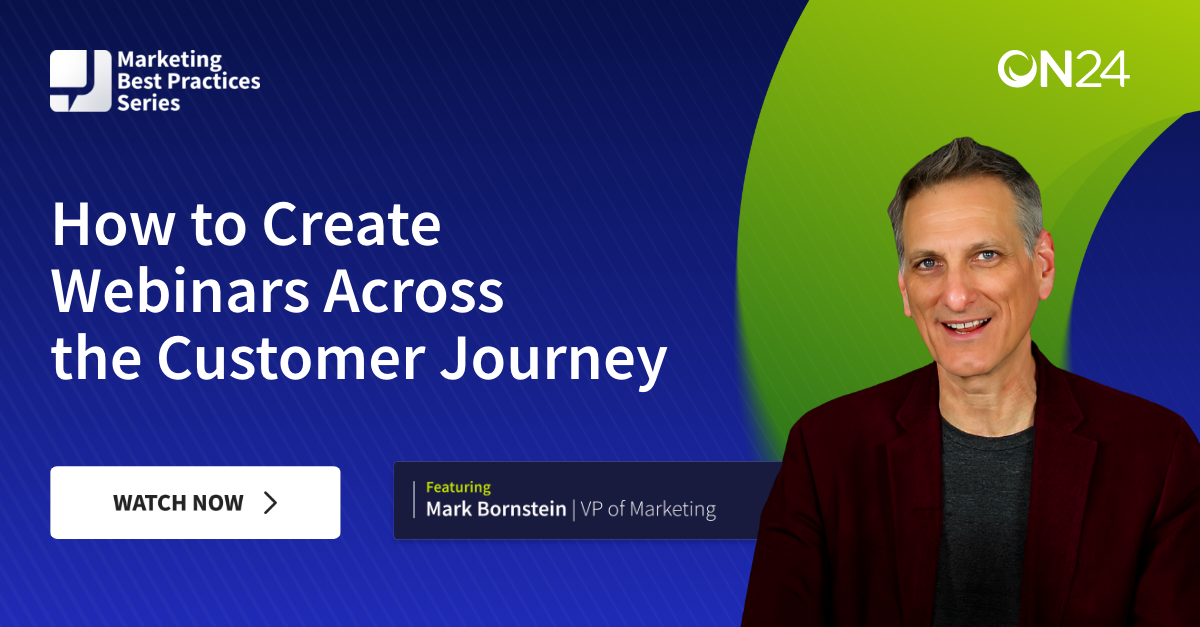The Ultimate Guide to B2B Demand Generation

It takes a lot of marketing energy — from content generation and content repurposing to audience targeting and more — for business-to-business (B2B) organizations to drive revenue. That problem, driving the demand that drives revenue, is what B2B demand generation teams seek to solve by attracting, engaging and nurturing leads through B2B lead generation.
To show you how it’s done, we’ve put together a complete guide, covering everything from the key components of a B2B demand generation strategy to best practices you should be following to maximize results.
Read on to learn more.
What is B2B Demand Generation?

B2B demand generation is a type of marketing strategy designed, as the name suggests, to generate demand for a business’s products or services. This is typically achieved through a focus on marketing activities that boost brand awareness and stimulate interest in the target audience, which, in the case of B2B demand generation strategies, is other businesses.
It’s an important part of broader B2B marketing strategies, allowing businesses to build a larger, more engaged audience. Over time, this audience feeds into a pipeline of leads who can be nurtured gradually toward becoming loyal paying customers.
Generally speaking, B2B demand generation strategies target specific businesses with educational and informational content designed to build trust and drive conversions over long sales cycles. This makes it different from B2C demand generation, which often aims to achieve conversions more quickly through broad appeal content.
Key Components of a B2B Demand Generation Strategy

A strong B2B demand generation strategy relies on a solid understanding of your target audience, the ability to create valuable content and a multi-channel approach to distribution. Here’s how each component plays into the overall strategy.
Identifying Target Audience and Buyer Personas
To target your audience effectively with relevant content, you first need to know who they are and their pain points and topics of interest. Creating robust buyer personas based on in-depth audience research can help.
Start by gathering data through direct research, such as customer surveys or by reviewing your existing engagement analytics. Use this data to create buyer personas representing your core audience groups, detailing their demographics, key interests and preferences.
Creating Valuable Content
Relevant, high-quality content is the cornerstone of demand generation strategies. It attracts and engages your target audience, delivers value that encourages them to stick around and gives you the opportunity to nurture them over time.
Diverse content types, including blog posts, whitepapers, case studies, webinars, and on-demand content, can work towards B2B demand generation goals. Just make sure to create all of your content in the context of your understanding of your audience’s interests and pain points.
Leveraging Multiple Channels
Using various channels to distribute your content and engage with your audience has several benefits over using a single channel. Most importantly, it allows you to leverage each channel’s individual strengths and reach your audience at different stages in their buying journey.
Channels commonly used in B2B demand generation campaigns include organic search, email and business-focused social media platforms like LinkedIn. Create a custom multi-channel strategy that suits your target audience’s preferences and develop content for each channel’s strengths.
Building and Nurturing Relationships
Although the end goal of a demand generation campaign is to boost sales and revenue, it uses a long-term approach. That typically involves building and nurturing relationships with leads, which can develop into strong customer relationships.
The first step to building a strong relationship with customers is create great content that they want. Easy, right? But techniques like audience segmentation can make it easier to find and develop impactful content while content personalization techniques can hyper-target audiences to help them feel valued.
Developing a Demand Generation Plan

A well-structured demand generation plan ensures your eventual strategy will attract and nurture an audience. It all comes down to planning. Here’s what to keep in mind:
Setting Clear, Measurable Goals
Any marketing strategy, including B2B demand generation, must have specific, measurable, achievable, relevant and time-bound (SMART) goals. These goals will guide your efforts and ensure your strategy contributes meaningfully to broader business objectives. B2B demand generation campaigns can work towards diverse goals, from boosting website traffic to increasing the number of quality leads generated.
Mapping Out the Buyer’s Journey
The buyer’s journey is a marketing concept describing the three main stages a person goes through on the pathway to making a purchase: “awareness,” “consideration,” and “decision.” Mapping the typical buyer’s journey for your business’s product or services can help you understand what content will impact your audience at each stage. For example, social media content is great for boosting awareness, while a B2B landing page is critical for targeting users in the decision stage.
Aligning Sales and Marketing Teams
Although sales and marketing teams often operate separately, encouraging collaboration can benefit demand generation strategies by ensuring that leads get a consistent experience throughout their journey. Align your sales and marketing teams on the goals they’re working towards, the key product or service messaging points they use and the processes they follow to create a more cohesive demand generation unit.
Establishing KPIs and Metrics For Success
Creating key performance indicators (KPIs) for your demand generation strategy will help you measure your success throughout the campaign. Which metrics you choose as KPIs will depend on the specifics of your strategy and the overall goals you’ve set, but they could include social media impressions, content engagement rate and lead conversion rates. Keep track of them and learn from the data, using the insights to refine your strategy over time.
Content Marketing for Demand Generation

Content marketing is a core component of demand generation strategies. It plays a key role in building an audience and creating opportunities for engagement. Here’s how to make the most of it.
Importance of High-Quality Content
High-quality content that addresses your audience’s needs and pain points acts like a magnet, drawing potential leads in with valuable information. Done consistently, this helps position your brand as a trustworthy thought leader that your audience will return to for reliable, useful insights. That presents your business with opportunities to nurture them towards becoming customers.
Types of Content That Drive Demand
Diverse content types — case studies, blog posts, ebooks, webinars, and whitepapers — can positively affect a B2B demand generation strategy. Each has different strengths and weaknesses, so choose the formats that best fit your audience’s preferences and the topics you focus on.
Leveraging Technology
Technology can be extremely helpful in running successful demand generation strategies at scale. Platforms like the ON24 Intelligent Engagement Platform tie together each strand of your campaign, making it possible to automate and streamline content creation, roll out personalized content to distinct audience segments and effectively analyze cross-channel engagement data.
Advanced Tactics for B2B Demand Generation

You have to go beyond the basics to get the best results from a B2B demand generation strategy. These are some of the most useful advanced demand generation tactics for your campaign.
Account-Based Marketing (ABM)
Account-based marketing is a form of personalized marketing that involves targeting specific high-value accounts (or leads) with tailored content. It’s particularly useful in B2B demand generation, where content personalization can help foster deeper relationships and accelerate conversions. To implement ABM, identify the key accounts you want to focus on, research their needs and preferences and then design content to address them.
Personalized Marketing Campaigns
Personalization is useful in an ABM approach to demand generation, and content personalization can also drive results in a conventional approach. To personalize, you’ll first need to segment your audience based on shared traits or interests. You can then deploy personalized content to your audience segments, maximizing its relevance and impact. This can be done through personalized content hubs, newsletters, and more.
Using Data and AI For Predictive Analytics
Advanced use of data and artificial intelligence (AI) in marketing can empower smarter demand generation efforts. Predictive analytics platforms can provide insights from large datasets to identify high-potential leads and effectively generate recommendations on targeting them. This data-driven approach ensures that your demand generation strategy operates efficiently, maximizing ROI.
Retargeting and Remarketing Strategies
Retargeting and remarketing are techniques used to reach and re-engage lapsed customers or leads who didn’t convert. Both can generate demand, leveraging the audience’s pre-existing knowledge of your brand or products to shorten the buying journey. Email, social media and paid search channels all offer retargeting or remarketing features that can be invaluable in building a consistent pipeline of leads.
Measuring and Optimizing Demand Generation Efforts

Like any marketing strategy, B2B demand generation campaigns work best when measured and consistently optimized. These are some top tips for handling that process effectively.
Key Metrics to Track
Metrics are the foundation of demand generation measurement. Use the KPIs you’ve established as your core measurement criteria and supplement them with additional metrics depending on your overall demand generation goal. If that goal is to increase revenue, for example, then metrics like conversion rate and demand generation ROI will be useful measures.
A/B Testing and Continuous Improvement
It’s unlikely that your demand generation strategy will be perfect from day one, so adopting an approach based on continuous improvement is important to ensure increased performance over time. Use data-driven techniques like A/B testing to gain insights into which content types, messaging styles, and distribution channels work best. Then, use those insights to make critical adjustments to your campaign.
Analyzing and Interpreting Data to Refine Strategies
All the data you gather from your demand generation performance analytics setup is useless if you don’t apply it. Analyzing and interpreting the data you collect across your marketing channels can help you understand what type of content resonates most with your audience, which channels are performing best and how you can make improvements that will drive better results.
Best Practices for B2B Demand Generation

Although many ways exist to create and manage a B2B demand generation strategy, some best practices are relevant to most strategies, including the following.
Building a Strong Brand Presence
Demand generation success is at least partly dependent on a strong brand. This helps to build trust with your audience, making it more likely that they’ll continue to engage with your content. As a beneficial side effect, working on increasing your brand’s trustworthiness and authority also means that leads who end up converting will be more likely to be loyal customers.
Fostering Long-Term Customer Relationships
Unlike lead generation and other conversion-focused forms of marketing, demand generation takes a long-term approach that relies on relationship building. Creating and fostering relationships with your audience and customer base makes them more likely to engage with your content consistently and means you can develop a deeper understanding of their needs and preferences.
Staying Updated with Industry Trends
The B2B demand generation landscape is constantly changing and staying ahead of the curve can help your business develop an edge against competitors. This applies to both trending topics in your industry and new marketing tools and techniques. Keep up to date with the cutting-edge and you’ll be able to maintain demand generation success over the long term, driving sustainable growth for your business.
Continuous Learning and Adaptation
Demand generation is a process of trial and error in that you should constantly learn from data to improve your strategy. Pay close attention to your engagement and conversion analytics and commit to regular reviews, where you conduct a deeper analysis and make decisions about applying insights in campaign adjustments or updates.
ON24 is a powerful tool for your B2B demand generation strategy. It provides a suite of features designed to increase lead volume and quality, improve pipeline conversion rates, and maximize efficiency. Try out our demand generation platform or get in touch to learn more about how to use it to drive success.

